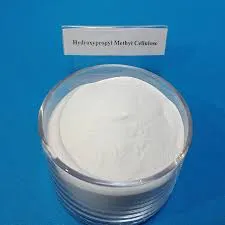
Nov . 12, 2024 19:23 Back to list
hydroxypropyl methyl cellulose msds
Understanding Hydroxypropyl Methyl Cellulose (HPMC) and Its Safety Data
Hydroxypropyl Methyl Cellulose (HPMC) is a versatile compound widely used in various industries, particularly in pharmaceuticals, construction, food, and cosmetics. As a cellulose derivative, HPMC is synthesized by modifying natural cellulose with hydroxypropyl and methyl groups, which enhance its solubility, thickening properties, and film-forming ability. Its unique characteristics make it an essential ingredient in many applications, ranging from serving as a binder in tablets to acting as a thickening agent in sauces and lotions.
Chemical Properties
HPMC is a white, odorless powder that is soluble in water at room temperature, forming a transparent and viscous solution. The degree of hydroxypropyl and methyl substitution can influence its properties, such as viscosity and solubility. Typically, HPMC is classified based on its viscosity range and the level of substitution—lower viscosity grades are often used in applications where clarity and fluidity are required, while higher viscosity grades are favored for thickening and stabilizing formulations.
Applications
1. Pharmaceuticals In the pharmaceutical industry, HPMC is used as an excipient in drug formulations. It acts as a binder in tablets, increasing cohesion and ensuring uniform distribution of active ingredients. Additionally, HPMC is used in controlled-release systems, allowing for the gradual release of medications, thereby improving therapeutic efficacy.
2. Construction HPMC is valued in the construction sector, where it functions as a water-retention agent in cement, gypsum, and tile adhesives. It helps improve workability and reduces cracking in cured materials.
3. Food Industry In food applications, HPMC serves as a thickener, emulsifier, and stabilizer in products like sauces, dressings, and dairy alternatives. Its ability to provide texture and mouthfeel makes it a popular choice among food manufacturers.
hydroxypropyl methyl cellulose msds

4. Cosmetics HPMC is frequently encountered in cosmetics and personal care products. Its film-forming properties make it effective in hair styling gels and skin creams, where it enhances texture and usability.
Safety and Handling
Despite its wide-ranging applications, the safety of HPMC is paramount. According to the Material Safety Data Sheet (MSDS) for HPMC, it is classified as a non-toxic substance under normal usage conditions. However, it is essential to follow recommended handling procedures to minimize potential exposure. Key safety measures include
- Personal Protective Equipment (PPE) When handling HPMC, it is advisable to wear gloves, goggles, and masks to prevent inhalation and skin contact, particularly in powder form.
- Ventilation Ensure adequate ventilation in workspaces to reduce exposure to dust and maintain air quality.
- Storage HPMC should be stored in a cool, dry place away from sunlight and incompatible materials. Proper storage conditions help maintain its integrity and prevent degradation.
Conclusion
Hydroxypropyl Methyl Cellulose is an adaptable compound with broad applications across numerous industries. Its unique properties contribute to the functionality and efficacy of various products, while its safety profile ensures that, when handled properly, it poses minimal risk to health. Understanding the characteristics, applications, and safety requirements of HPMC is essential for anyone involved in its production, distribution, or application. As industries continue to evolve, HPMC remains a critical ingredient that enhances product performance and user experience.
-
tile-bonding-additives-for-stronger-bonds
NewsAug.22,2025
-
construction-grade-rdp-for-wholesale-needs
NewsAug.22,2025
-
trusted-wholesale-hec-partners
NewsAug.22,2025
-
hec-solutions-for-industrial-excellence
NewsAug.22,2025
-
construction-additives-need-hpmc-essentials
NewsAug.22,2025
-
hpmc-versatile-cellulose-ether-for-industries
NewsAug.22,2025







